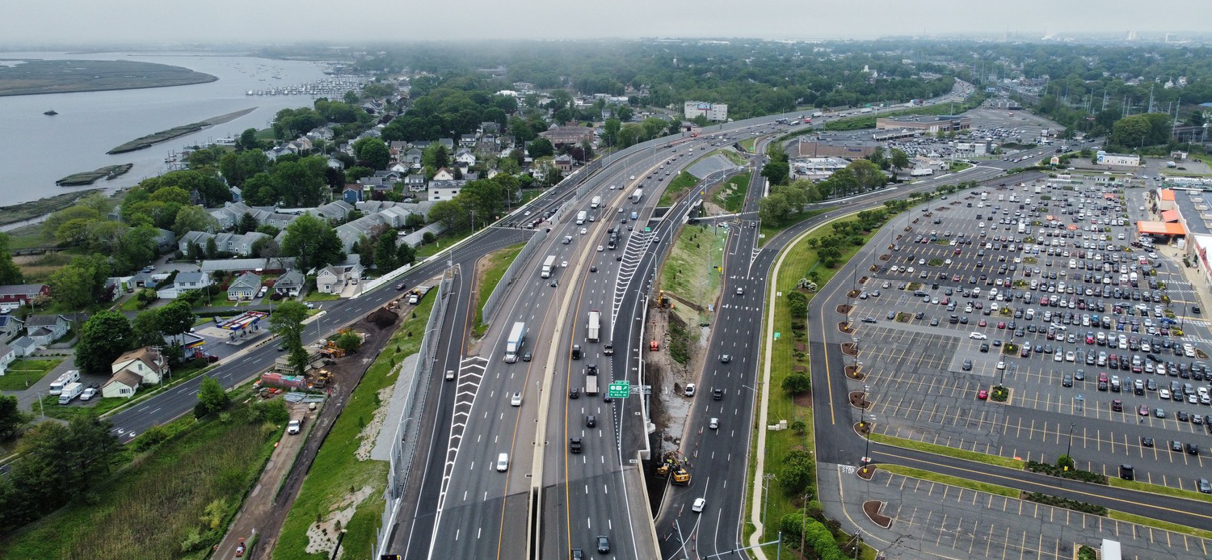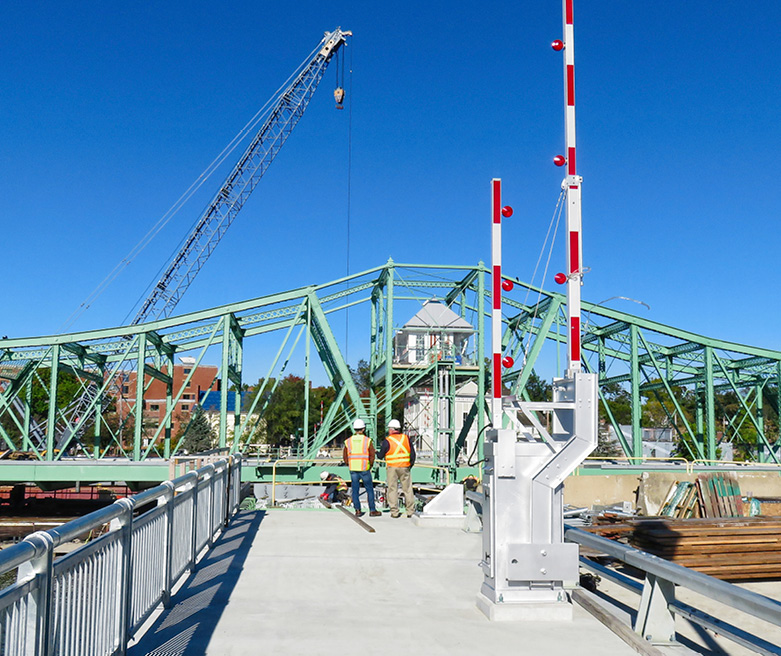Due to the removal of toll plazas in the State of Connecticut in the 1980s, for nearly 40 years, drivers using I-95 in Stratford, CT, were without on and off ramps at interchange 33—until now.
As part of its goal to improve mobility and congestion along the major interstate, the Connecticut Department of Transportation (CTDOT) entrusted STV to design a full diamond interchange configuration at the old Stratford Toll Plaza location. The reconstructed interchange includes a new 1,500-foot-long northbound (NB) I-95 on ramp and a new 1,400-foot-long southbound (SB) I-95 off ramp, modifications to the existing drainage system, modifications to several traffic signals, and reconfiguration of existing local roadways to accommodate the ramp termini.
Now open, the upgraded interchange was long anticipated by the local community. The original roadway was constructed in the 1950s as a partial interchange to prevent drivers from bypassing the Stratford toll plaza. As housing and shopping centers grew around the interchange, commuters and residents faced traffic congestion and limited access to the adjacent roadway network and U.S. Route 1.
Our team in Connecticut served as the project’s design consultant. Our design leveraged accelerated bridge construction methods that contributed to cost savings for CTDOT, while delivering the project ahead of schedule.

A new bridge structure was required to carry the new I-95 southbound Exit 33 off-ramp over the bound U.S. Route 1. STV’s team needed to limit major disruptions to traffic conditions and provide cost and schedule savings for CTDOT. The team selected the innovative geosynthetic reinforced soil-integrated bridge system (GRS-IBS) substructure with an integral abutment design, rather than a cast-in-place substructure. These GRS-IBS substructure systems have reinforced soil with alternating layers of fill and reinforcement materials that are stable by itself, only needing a wall-facing façade.
The project team used the GRS-IBS system in conjunction with a steel girder superstructure with integral back wall, which eliminated the need for an approach concrete slab, traditional bearings and bridge expansion joints. The firm’s recommendation of the GRS-IBS abutment design is one of the first applications of this approach in Connecticut.

Keeping an aggressive schedule was one of the project’s more complex challenges, particularly in maintaining traffic throughout construction. The project site encompasses one of the busiest interstate highways, a network of local roads, U.S. Route 1 and numerous business and shopping centers, as well as homes and apartment complexes. The project required no continuous closures of travel lanes during construction.
GRS-IBS systems can be constructed swiftly without the potential of major delays caused by concrete. GRS-IBS substructures are one method of accelerated bridge design and construction standards that, with the right conditions, can be deployed instead of cast-in-place abutments. For this project, our local Connecticut team understood how vital this interchange is to not only the Stratford and Milford communities but all commuters who pass through this section of I-95. This design decision shaved off months from the construction schedule and provided significant cost savings for CTDOT.
Since opening, the interchange has reduced traffic congestion and provided easier access for locals to their homes and economic centers.
The project recently earned some much-deserved recognition. Our team and CTDOT were celebrated at the American Council of Engineering Companies Connecticut Chapter’s awards banquet with their 2024 Engineering Excellence Award for the project’s technical excellence.
While Interchange 33 may only be one section of I-95, which stretches from Maine to Florida, the magnitude of Interchange 33’s reconstruction upon mobility within the local community and the state cannot be understated.







